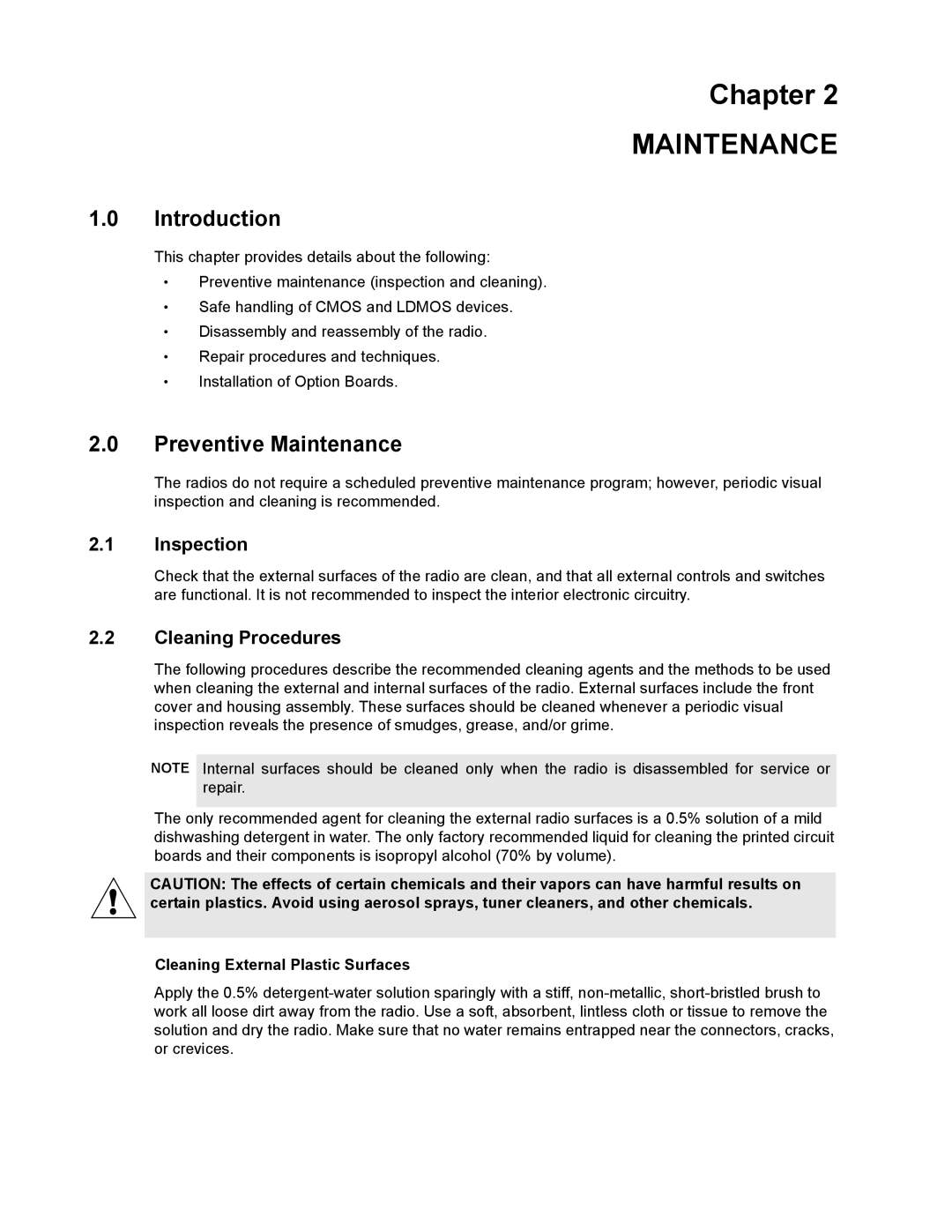
Chapter 2
MAINTENANCE
1.0Introduction
This chapter provides details about the following:
•Preventive maintenance (inspection and cleaning).
•Safe handling of CMOS and LDMOS devices.
•Disassembly and reassembly of the radio.
•Repair procedures and techniques.
•Installation of Option Boards.
2.0Preventive Maintenance
The radios do not require a scheduled preventive maintenance program; however, periodic visual inspection and cleaning is recommended.
2.1Inspection
Check that the external surfaces of the radio are clean, and that all external controls and switches are functional. It is not recommended to inspect the interior electronic circuitry.
2.2Cleaning Procedures
The following procedures describe the recommended cleaning agents and the methods to be used when cleaning the external and internal surfaces of the radio. External surfaces include the front cover and housing assembly. These surfaces should be cleaned whenever a periodic visual inspection reveals the presence of smudges, grease, and/or grime.
NOTE Internal surfaces should be cleaned only when the radio is disassembled for service or repair.
The only recommended agent for cleaning the external radio surfaces is a 0.5% solution of a mild dishwashing detergent in water. The only factory recommended liquid for cleaning the printed circuit boards and their components is isopropyl alcohol (70% by volume).
CAUTION: The effects of certain chemicals and their vapors can have harmful results on
!certain plastics. Avoid using aerosol sprays, tuner cleaners, and other chemicals.
Cleaning External Plastic Surfaces
Apply the 0.5%
